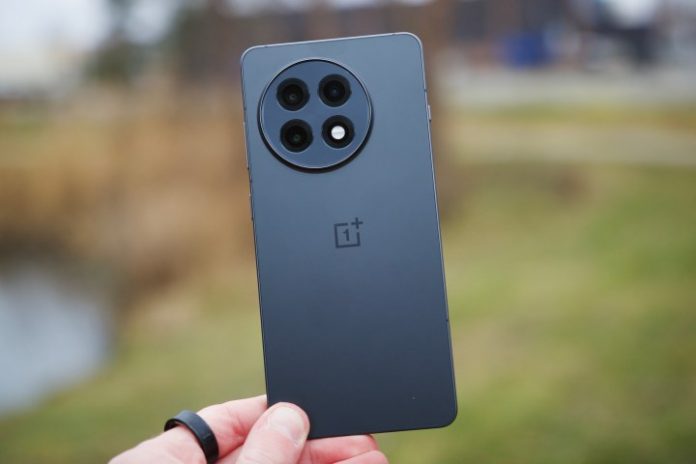It’s been said that great technology alone doesn’t constitute innovation. Perhaps nowhere is this more apparent than in OnePlus’ R series phones. Last year’s OnePlus 12R was among the best smartphones of 2024, not because it had the best cameras, fastest processor, or most sophisticated set of artificial intelligence (AI) features — but because it delivered amazing value for its $500 price tag. It was, without a doubt, the best money you could spend on a smartphone.
In fact, the OnePlus 12R was so great that it left us wondering what the company could possibly do for an encore. Well, it’s come up with the OnePlus 13R, and it looks like it’s a worthy successor to the OnePlus 12R’s legacy. This year’s model has managed to keep the OnePlus vibe alive while refining the design in some interesting ways, making the usual annual improvements to core specs like the processor and taking the cameras to a whole new level.
It’s not all sunshine and roses, though, as OnePlus has also taken some smaller steps backward. Do the improvements in this year’s OnePlus 13R make up for the compromises and changes, and is the new model still providing good value at $100 more? Let’s dig in and find out.
OnePlus 13R vs. OnePlus 12R: specs
| OnePlus 13R | OnePlus 12R | |
| Dimensions | 161.72 x 75.77 x 8.02mm | 163.3 x 75.3 x 8.8mm |
| Weight | 206g | 207g |
| Screen | 6.78-inch AMOLED 2780 x 1264 resolution 1-120Hz refresh rate 1,600 nits High Brightness Mode 4,500 nits peak brightness |
6.78-inch AMOLED 2780 x 1264 resolution 1-120Hz refresh rate 1,600 nits High Brightness Mode 4,500 nits peak brightness |
| Durability | IP65, Gorilla Glass 7i | IP64, Gorilla Glass Victus 2 |
| Cameras | Primary camera: 50MP, f/1.8 Telephoto camera: 50MP, f/2.0, 2x optical zoom Ultrawide camera: 8MP, f/2.2, 112° field of view Front camera: 16MP, f/2.4, fixed focus |
Primary camera: 50MP, f/1.8 Ultrawide camera: 8MP, f/2.2, 112° field of view Macro camera: 2MP Front camera: 16MP, f/2.4, fixed focus |
| Processor | Qualcomm Snapdragon 8 Gen 3 | Qualcomm Snapdragon 8 Gen 2 |
| RAM | 12GB LPDDR5X |
8GB / 12GB LPDDR5X |
| Storage | 256GB UFS 4.0 |
128GB / 256GB UFS 3.1 |
| Battery | 6,000mAh | 5,500mAh |
| Charging | 55W wired charging | 80W wired charging |
| Software | OxygenOS 15 (Android 15) 4 years of Android OS updates 6 years of security updates |
OxygenOS 14 (Android 14) 3 years of Android OS updates 4 years of security updates |
| Connectivity | 5G (Sub-6GHz), Wi-Fi 7, Bluetooth 5.4, NFC | 5G (Sub-6GHz), Wi-Fi 7, Bluetooth 5.3, NFC |
| Price | $600 | Starting at $500 |
OnePlus 13R vs. OnePlus 12R: design
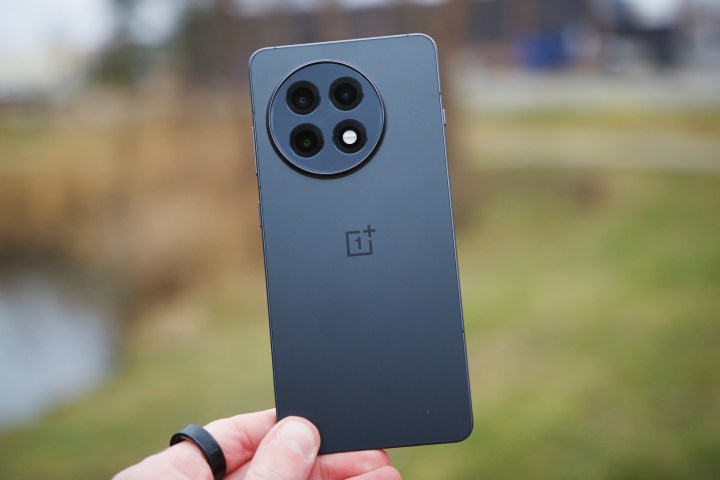
Flat-edged phones are all the rage these days, so it’s no surprise that OnePlus is taking a cue from other smartphone vendors and moving away from the curves. The OnePlus 13R follows its premium sibling’s aesthetic in nearly every way except for the more elaborate finishes. You get flat edges, a flatter screen, and a camera ring that stands on its own.
The iconic OnePlus aesthetic is still very present, but it feels like it’s all grown up with this year’s models. Gone are the horizontal tangents that blended the camera ring into the edges, and the result is a more refined and understated look, as if OnePlus no longer needs to advertise its presence as loudly as it once did. The result is a classier and more elegant design that feels simple and practical.
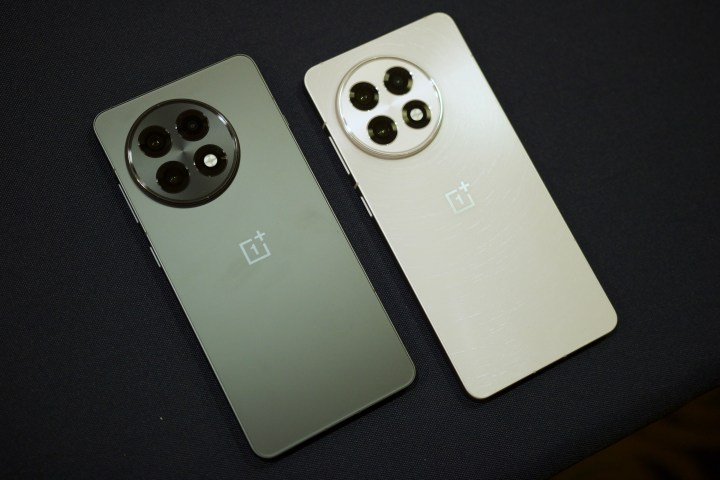
As the baby brother to the brand’s flagship, the OnePlus 13R doesn’t offer any microfiber or ultra-silky finishes. The company has left its myriad collection of greens in the rearview mirror this year, and the result is that the OnePlus 13R now comes in neutral black and whitish tones only. These get the company’s usual whimsical names of Nebula Noir and Astral Trail, but both use the same matte glass. The Astral Trail gets a subtle artistic touch with a spiral pattern that flows outward from the camera.
While basic black is a staple of most smartphone makers, OnePlus’ decision to move to white-like finishes is a new move for its 2025 models, at least for those outside of China. The OnePlus 12R came in Iron Gray and a Cool Blue shade that we thought was quite fetching — although its glossier finish could be a fingerprint magnet. The company later released a very slick color variation in the form of the OnePlus 12R Genshin Impact Edition.
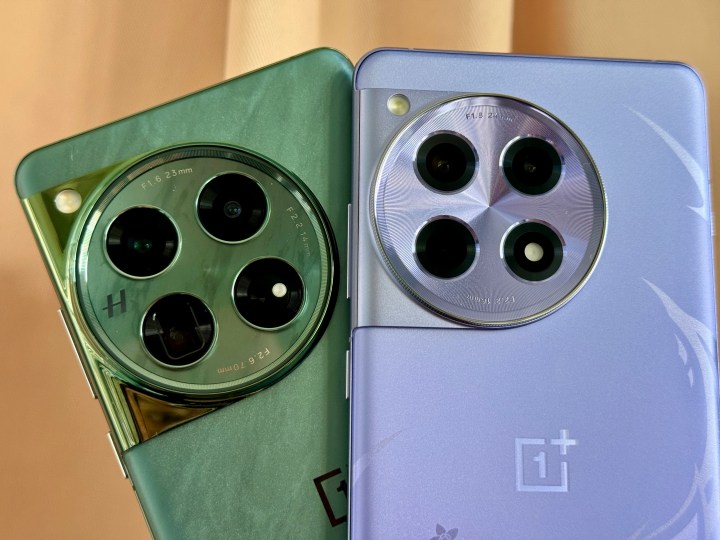
By contrast, the OnePlus 13R seems downright pedestrian. Maybe this is OnePlus getting more “serious” about its phones, and there’s no doubt this year’s models have a much more no-nonsense look about them, but we’re hoping the company has something else up its sleeve for later this year.
Still, slap a case on the OnePlus 13R, and you probably won’t care much about the mundane neutrals. Still, that’s a shame, as the fit and finish is nicer than ever. The choice to go all-in on matte glass means you won’t need to worry about fingerprints and smudges, and the construction is solid with firm and clicky buttons. It has a premium feel that matches its more professional looks.
OnePlus has also taken its durability up a notch this year with an IP65 rating and the latest Gorilla Glass 7i, both modest but noteworthy improvements over the OnePlus 12R’s IP64 and Gorilla Glass Victus 2. While the IP rating still doesn’t match the IP68 of many other phones, it’s reasonable for a phone in this price range.
OnePlus 13R vs. OnePlus 12R: display
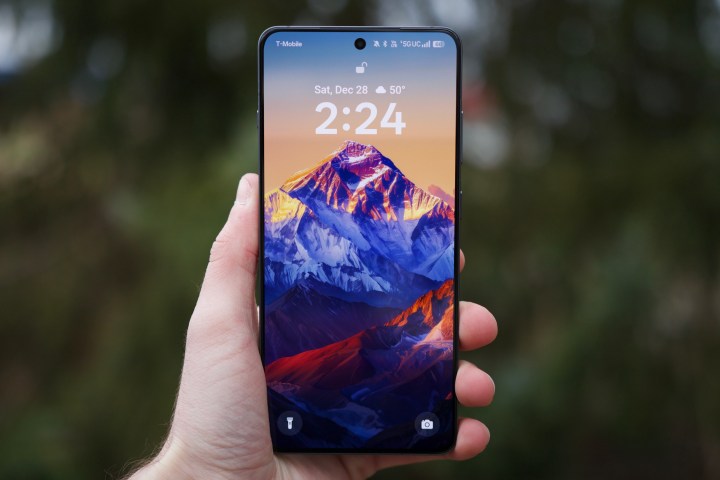
If there was one area in which the OnePlus 12R punched well above its weight class, it was that phone’s stunning 6.78-inch AMOLED panel. At 2780 x 1264, it delivered a remarkably crisp 450 pixels per inch (ppi) and supported variable refresh rates from 1Hz to 120Hz, Dolby Vision and HDR10+, and an eyeball-searing peak brightness of 4,500 nits. It felt like a screen this good had no business being on a $500 smartphone, but there it was.
The OnePlus 13R hasn’t moved the needle on display quality, but that’s fine, as there’s really no need. It’s still a fantastic display with all the same specs that’s unmatched in its price range even a year after it first came to the OnePlus 12R.
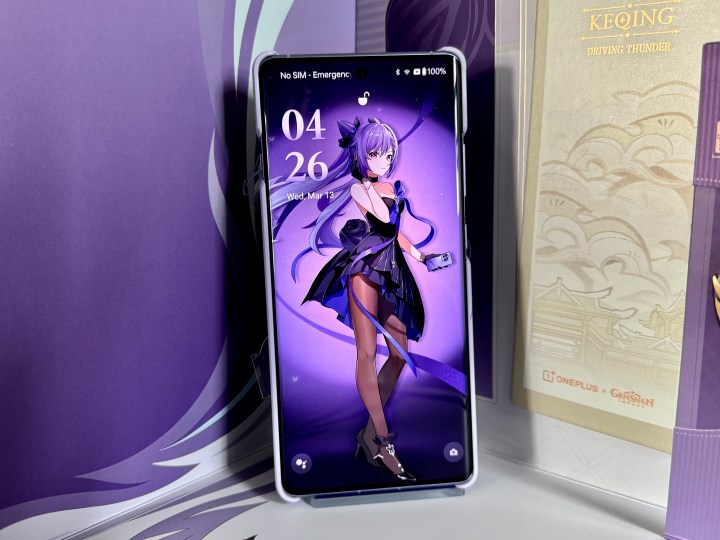
Although the overall quality remains the same, OnePlus has made a significant design change by finally getting with the program and eliminating the curved edges. Curved displays have become something that now feels “so last-decade,” but OnePlus stubbornly held on with last year’s models even as other flagship smartphones followed Samsung’s lead in going flat or nearly flat.
OnePlus has taken the latter approach with its flagship OnePlus 13, which uses 2.5D quad-curved glass, but the OnePlus 13R doesn’t get quite as fancy. It’s a strictly flat display. The edges are rounded off enough that it’s still comfortable to hold, similar to what Apple and Samsung have done with their latest phones, but the display stops at the sides, making it more comfortable to use and eliminating the accidental screen touches that we occasionally found ourselves experiencing on the OnePlus 12R.
OnePlus 13R vs. OnePlus 12R: performance

OnePlus has a nice habit of putting higher-end chips in its smartphones. While its R-series models lag behind its pricier flagships each year, they don’t do so by much. When the OnePlus 12 moved on to Qualcomm’s latest Snapdragon 8 Gen 3, the OnePlus 12R inherited the Snapdragon 8 Gen 2 from the OnePlus 11.
So, it’s no surprise that it’s repeating that move this year by bringing the Snapdragon 8 Gen 3 from last year’s OnePlus 12 to the OnePlus 13R.
For context, that’s the same chip found in every 2024 flagship, from Samsung’s Galaxy S24 Ultra and Z Flip 6 to the Asus ROG Phone 8 Pro and Xiaomi 14. Among Android phones, it’s outperformed only by the Snapdragon 8 Elite — a chip that has yet to appear on any mainstream flagships beyond the OnePlus 13 (although we’ll undoubtedly soon see it arrive on the Galaxy S25 lineup).
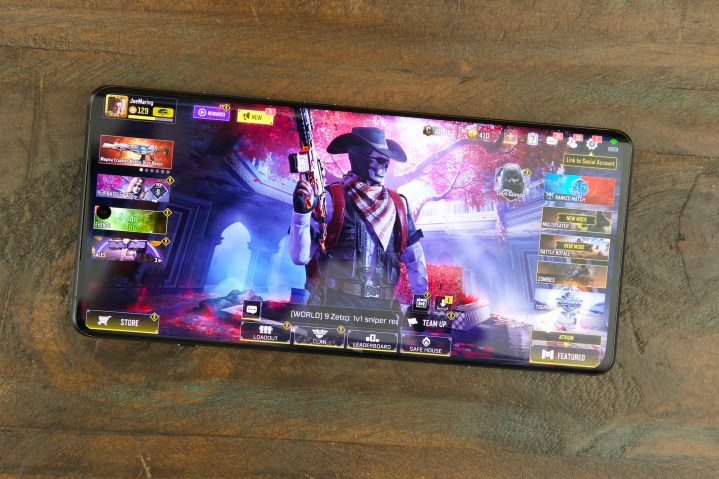
The more interesting question is whether any of this matters. Flagship smartphone silicon has reached such a point of diminishing returns that you’d be hard-pressed to notice any performance differences in a phone sporting any chip in Qualcomm’s modern Snapdragon 8 series. The Gen 2 was no slouch and could handle the latest games without breaking a sweat, so an upgrade to the Snapdragon 8 Gen 3 is only meaningful on paper. Sure, the benchmarks score higher, but who really cares if you aren’t going to use the extra performance?
The more important metric here is efficiency, but both the OnePlus 12R and OnePlus 13R have been designed to not only take advantage of what Qualcomm’s silicon has to offer but with exceptional thermal engineering that prevents them from even feeling warm under heavy load.
Practically speaking, the most significant difference between the OnePlus 12R and OnePlus 13R is the RAM and storage capacities. The OnePlus 12R was available in two configurations, letting you select either 8GB or 16GB of RAM, depending on whether you opted for the 128GB or 256GB model. OnePlus is only offering a single 256GB configuration of the OnePlus 13R this year, and it’s split the difference in the RAM, offering 12GB. We don’t think that hampers the phone in daily use; it may be slightly disappointing for those who want to do heavier multitasking or play more demanding games, but that may be expecting too much from a $600 phone.
OnePlus 13R vs. OnePlus 12R: battery
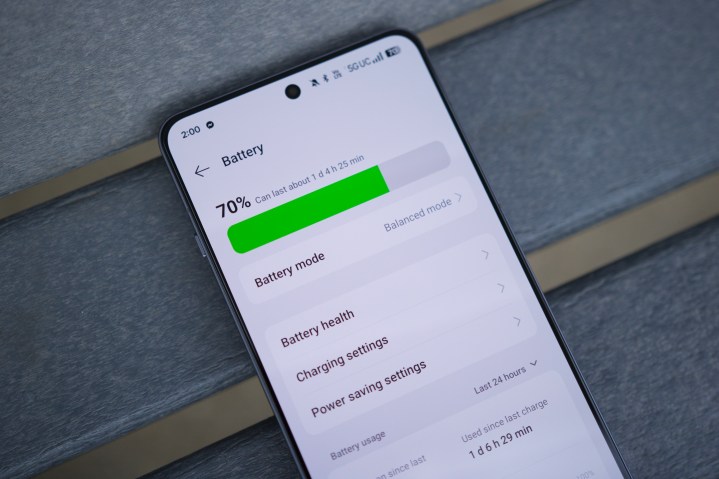
Battery capacities are another area in which OnePlus’ budget phones have pushed the envelope. The OnePlus 12R packed in a 5,500mAh cell, and this year’s OnePlus 13R ups that to 6,000mAh, matching the battery from its more expensive sibling.
Combine that sizeable battery with the power efficiency of Qualcomm’s Snapdragon 8 Gen 3 chip, and the result is a phone that will easily get you through two days of moderate to heavy use before it needs to see a charger. We’re pretty sure you could hit three days with lighter use.
While testing the OnePlus 13R, we put it through four hours of screen time, including 100 minutes of gaming, and ended the day with 61% in the tank. After another full day of use, with three hours of screen time, the phone still had 18% at lights-out. At no time did we feel any concern that we would be left stranded. That’s not to say you can’t kill it in a day; you’ll want to pack a charger or battery pack if you’re a power user traveling, navigating, and snapping dozens of pictures while trying to stay connected to colleagues, friends, and family.
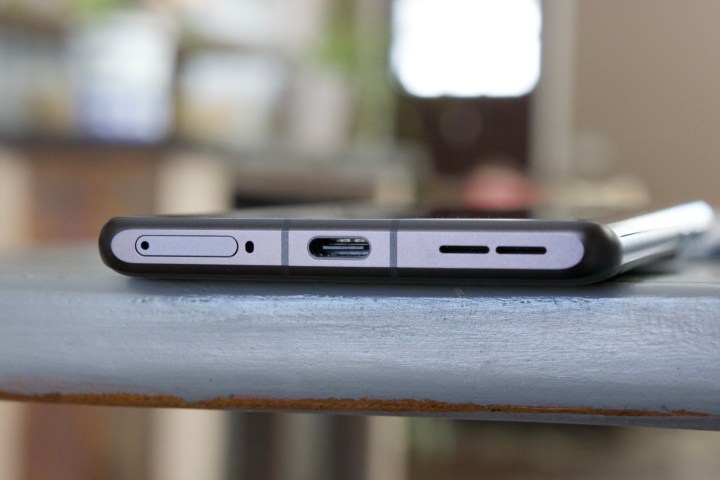
The OnePlus 12R doesn’t fall behind by much. Its 5,500mAh cell and Snapdragon 8 Gen 2 will still easily get you through a full day of use and probably well into another, but you’ll probably find yourself getting nervous if you’re away from a charger toward the end of that second day.
Sadly, there’s one surprising area where the OnePlus 12R still has an edge over its successor. OnePlus has always boasted some of the fastest charging speeds, but for some inscrutable reason, it took a step backward with this year’s R model, dropping from the 80W wired charging of the OnePlus 12R to 55W on the OnePlus 13R. That’s still ahead of what most other smartphones can do, but it’s disappointing when you know the company can — and has — done better.
To put this in perspective, the OnePlus 12R can go from zero to 100% in about a half hour, while the OnePlus 13R will take nearly an hour to hit that same number. The extra battery life helps make up for that, and you likely won’t care if you’re plugging it in overnight; you just won’t be getting the quick top-ups that OnePlus is known for.
There’s also no wireless charging here, but that’s less surprising considering that it’s been excluded from all of the prior OnePlus R models. The one piece of good news is that the OnePlus 13R includes the SuperVOOC charger in the box, which is a pleasant surprise considering the company chose to omit that for the pricier OnePlus 13.
OnePlus 13R vs. OnePlus 12R: cameras
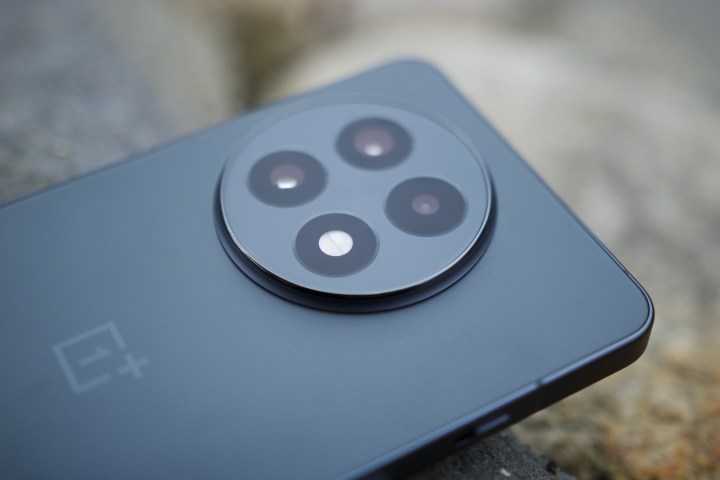
In today’s smartphone market, it’s typically the camera systems that set the flagship models apart. This means it’s hard to expect too much from a phone in the $500 to $600 price range, but the good news is that OnePlus delivers quite well here.
Neither of OnePlus’ R models gets the finely Hasselblad-tuned camera systems of their higher-end siblings, but they beat most other phones in their class by taking photos that go beyond merely being Instagram-worthy. The OnePlus 12R was competent, but this year’s OnePlus 13R corrects some of the odd decisions from its predecessor and benefits from the improved image processing in Qualcomm’s newer chip.
The OnePlus 12R only featured two real lenses: a 50-megapixel (MP) primary camera and an 8MP ultrawide. There was also a 2MP macro camera, but that was essentially useless and not worth considering as part of the overall photography package. We found that shots from the 50MP main camera came out quite well under the right lighting conditions, but like most mid-range camera systems, it didn’t handle lower lighting or motion particularly well. The color balance also sometimes seemed off by just enough that we wondered if OnePlus was making proper use of the image signal processor in the Snapdragon 8 Gen 2 chip, and the lack of Hasselblad color management produced shots that appeared dull and washed out compared to the OnePlus 12.
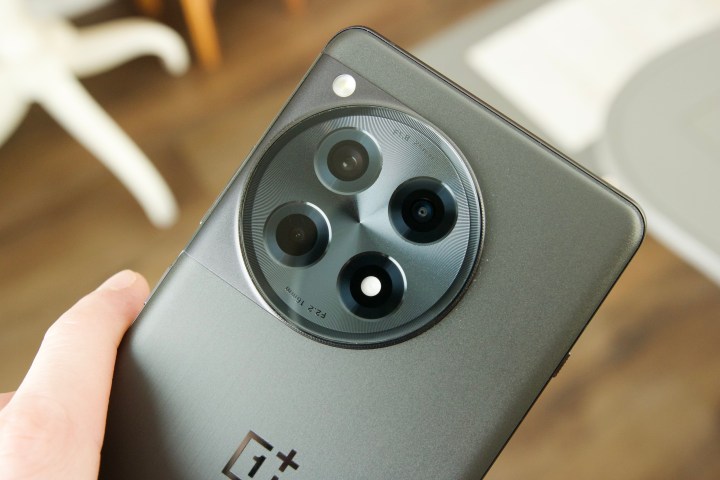
That’s not to say that the OnePlus 12R wasn’t an adequate camera; the common wisdom in buying a smartphone is that you need to pay up if you want the best cameras, and OnePlus is no exception here. However, the OnePlus 13R has made enough improvements that we feel it should hold its own much better against pricier flagships.
For one thing, the OnePlus 13R now features a proper triple-lens camera, ditching the unmentionable macro sensor for a proper 50MP telephoto camera. That only has a 2x optical zoom, which lags behind in an era when most modern phones are going to 3x or 5x, but it’s still a nice improvement, and it takes surprisingly good photos that are much more natural and balanced even without the Hasselblad integration. The 8MP ultrawide sensor is still a bit disappointing in resolution, but at least it gets the color balance right this year.
The OnePlus 13R may not be the best camera system in its class, but it’s certainly a top contender. Those who want extreme zoom ranges or more versatility from their smartphones should consider a higher-end flagship, but we don’t think you can go wrong with the OnePlus 13R for its price; the cameras are one of the best reasons to opt for it over the prior model, and may even be enough to convince some folks to upgrade.
OnePlus 13R vs. OnePlus 12R: software and updates
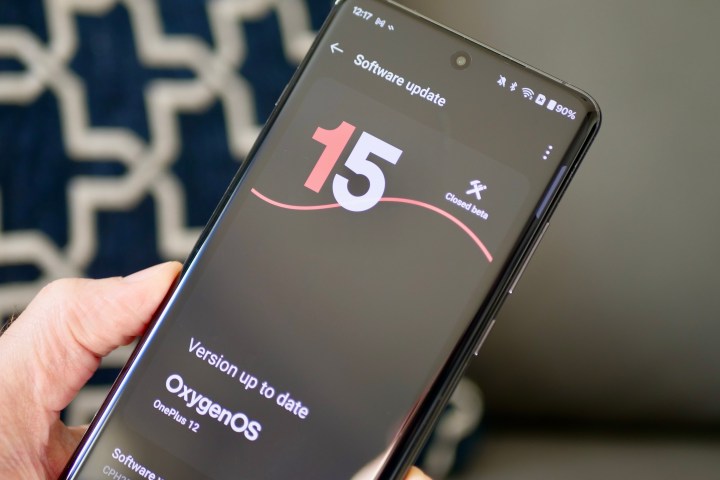
Like prior models, the OnePlus 13R ships with the latest version of Android and the company’s own OxygenOS layered on top. This year, that’s Android 15 and OxygenOS 15, with a promise of four years of OS updates and six years of security updates.
The OnePlus 12R came with Android 14 and OxygenOS 14 and a shorter run of updates, with the company promising three years of major OS updates and four years of security patches. However, Android 15 and OxygenOS 15 have already slowly begun rolling out to the OnePlus 12R, which puts it mostly on par with the newer model for core software features, although a few are limited to the newer models.
For example, the OnePlus 13R leans a bit more heavily into AI, with OxygenOS 15 introducing support for Google Gemini and Intelligent Search — but only on the OnePlus 13 and OnePlus 13R. The company has been vague on whether other AI features are coming to the OnePlus 12R; many of them aren’t present in the initial OxygenOS 15 release, but there have been hints that some may be rolled out later.
Leaving the AI stuff aside, OxygenOS 15 has turned out to be a pleasant surprise. After years of feeling a bit weird and rudderless, OxygenOS 14 improved things nicely, and this year, OxygenOS 15 refines that further. It’s fast, responsive, and visually appealing while also adding a unique split-screen multitasking feature. If you’ve been turned off by OxygenOS in the past, the latest version warrants another look, and those who have been fans of more recent OxygenOS releases will find a lot to like here.
OnePlus 13R vs. OnePlus 12R: special features
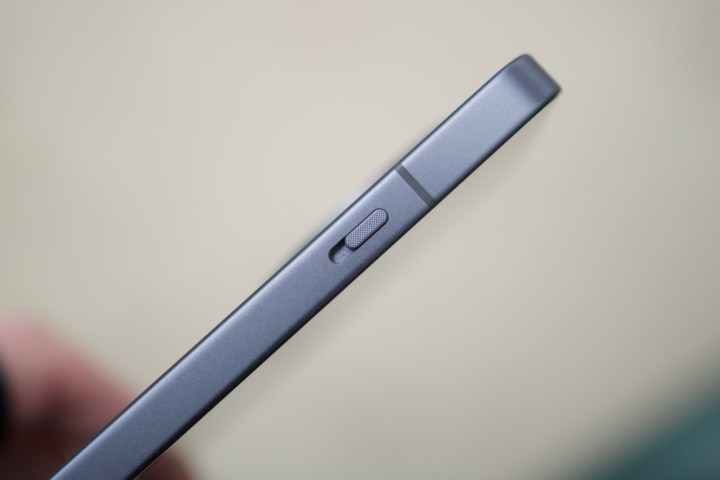
The OnePlus 12R and OnePlus 13R both have a few unique features in common, including an infrared (IR) blaster that lets you use it as a remote control for IR devices like TVs, stereos, and air conditioners. There was a time when this was a staple of many smartphones, but it’s something most manufacturers have left behind. It’s a nice touch that OnePlus still includes it.
The OnePlus 13R also brings a collection of the usual AI features as part of OxygenOS 15. There’s nothing particularly remarkable here, just the usual stuff you’ll find on other modern smartphones to help with photo editing and summarizing notes, along with Google’s Circle to Search. Photo tools include AI Eraser, AI Detail Boost, AI Reflection Erase, and AI Unblur. They’re nothing we haven’t seen before and fall short of things like Google’s Magic Eraser and Magic Editor, but they’re here if you want them. They’re exclusive to the OnePlus 13R for now but will likely trickle down to the OnePlus 12R in future OxygenOS 15 updates.
The Open Canvas multitasking system also comes over from the OnePlus Open, letting you take advantage of the foldable’s powerful split-screen multitasking features on the single display. It’s a refreshing improvement on Android’s standard multitasking system and makes it much easier to bounce back and forth between apps.
OnePlus 13R vs. OnePlus 12R: price and availability
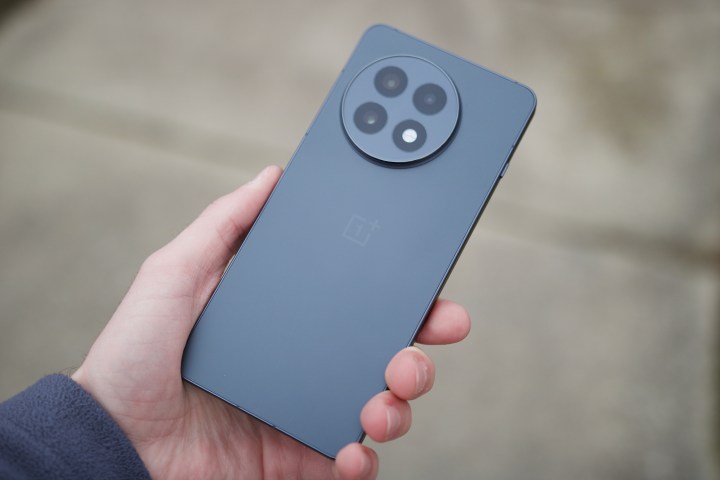
The OnePlus 13R now starts at $100 more than its predecessor, but the reality of that price increase is a bit more complicated. This year’s model comes in a single configuration with 256GB of storage and 12GB of RAM for $600, but that’s not far off from what the OnePlus 12R offered for the same price.
At launch, the OnePlus 12R offered a choice between a 128GB version with 8GB of RAM for $500 or a 256GB one with 16GB of RAM for $600. This means the OnePlus 13R offers the same storage as the $600 OnePlus 12R, only with slightly less RAM. However, 12GB is a healthy amount of RAM for a midrange smartphone, and we think the other improvements in the camera system, processor, and battery life more than compensate for it anyway.
However, now that the OnePlus 13R is out, the base OnePlus 12R has dropped to $300 for the 128GB/8GB model and $400 for the 256GB/16GB version. As before, you’ll need to opt for the pricier one if you want the Cool Blue finish.
OnePlus 13R vs. OnePlus 12R: verdict
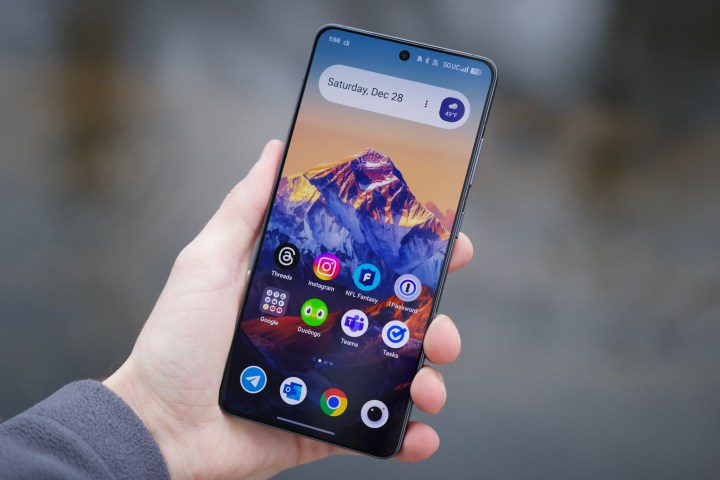
There’s a higher price of admission to the OnePlus family this year, but you’re getting even more exceptional value for the price. The OnePlus 13R makes some big and bold steps forward, but it also makes two smaller steps back.
On the upside, the OnePlus 13R delivers an excellent camera system, an easy two-day battery life, the powerful Snapdragon 8 Gen 3 chip, and a more refined and professional design. The software update policy is even more generous, with four years of updates that will keep it current for at least two years more than the OnePlus 12R.
Sadly, that comes with slower wireless charging and a departure from OnePlus’ more fun and whimsical designs and colors. To be clear, we don’t think either of these is a deal-breaker; design is entirely subjective, and 55W wired charging still runs circles around most of the competition — it’s only a downgrade by OnePlus’ own standards. The OnePlus 13R also still lacks wireless charging, but that’s not the least bit surprising as OnePlus has had a strange relationship with wireless charging over the years. We’re just happy it returned to the OnePlus 12 last year, but expecting it on the company’s R series models is probably asking for too much.
The bottom line is that the OnePlus 13R easily takes its predecessor’s crown as the best $600 you can spend on a smartphone. It has improved everything important from the OnePlus 12R, and while premium flagships offer more features, the incredible value the OnePlus 13R provides will make you question whether you really need to spend more money on any of those things.
While the OnePlus 13R beats it out in nearly every way, the OnePlus 12R is still a very solid buy for those on a tight budget since you can now get in for as little as $300. You’re still getting a powerful phone with flagship silicon, most of the new features in OxygenOS 15, an acceptable camera system, faster wired charging, and very respectable battery life.
Buy the OnePlus 13R:
Buy the OnePlus 12R:

